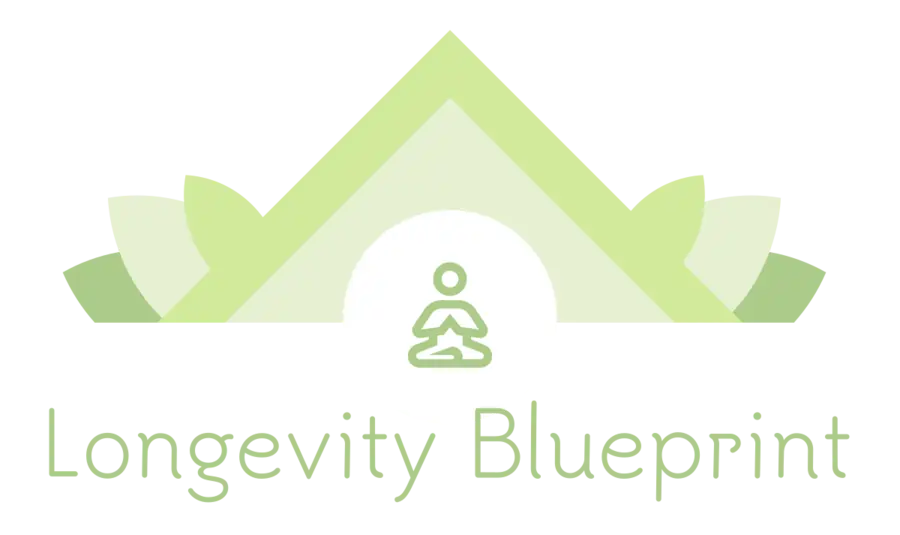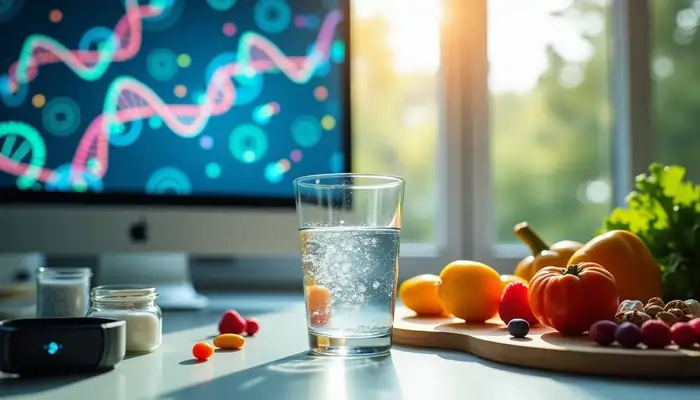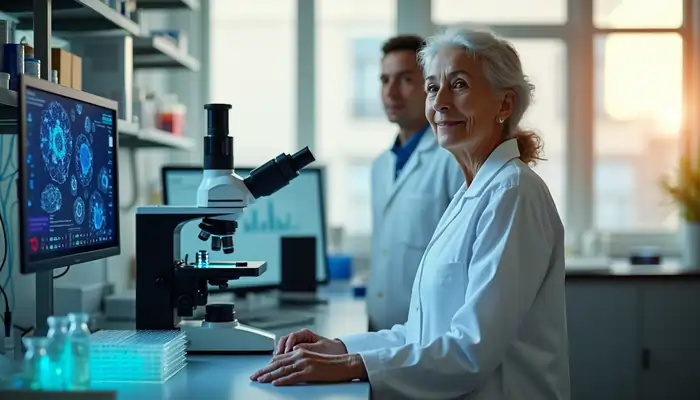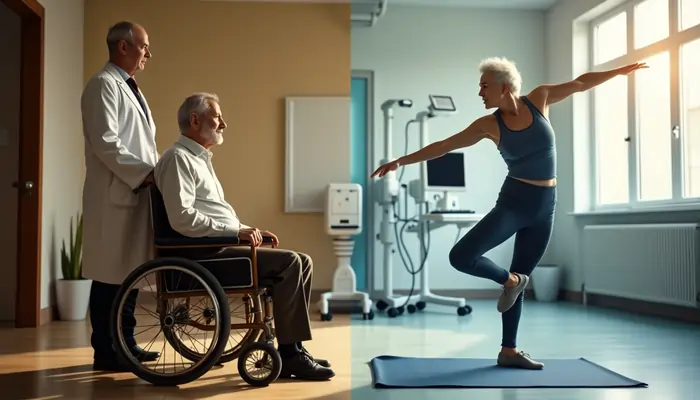Longevity: The Complete Science-Backed Guide to Living Longer
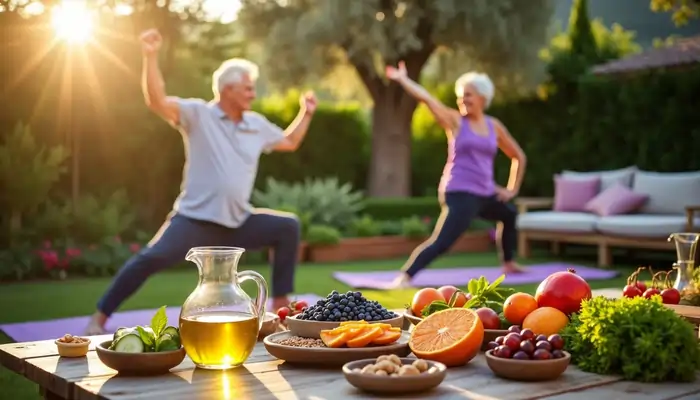
Have you ever wondered why some people live vibrantly into their 90s and beyond, while others struggle with health issues decades earlier? The secret may not be what you think.
In 1900, the average life expectancy was just 47 years. Today, it’s 79. But here’s what’s truly fascinating: research shows that only about 25% of how long we live is determined by our genes—the rest comes down to lifestyle and environment.
This guide explores the cutting-edge science of longevity—not just how to add years to your life, but how to add life to your years. Drawing on over 50 scientific studies and research from the world’s blue zones (where people regularly live past 100), we’ll uncover the biological mechanisms of aging and the evidence-based strategies that can help you live longer and healthier.
This piece explores proven ways to live a longer, healthier life. Research from Harvard shows you can add up to 14 years to your life with five lifestyle choices: eating well, exercising regularly, keeping a healthy weight, staying away from smoking, and drinking moderately. The Seventh-day Adventists prove this works – they live almost 10 years longer than average Americans by following these healthy principles.
Living longer means more than just adding years to life. We’ll get into how exercise boosts longevity – research shows people who exercise 300-599 minutes weekly have a 26-31% lower risk of dying early. You’ll learn practical tips to use daily and ways to improve your quality of life among other factors. The focus stays on optimizing your healthspan – the time you spend in good health – rather than just extending lifespan.
What Is Longevity?
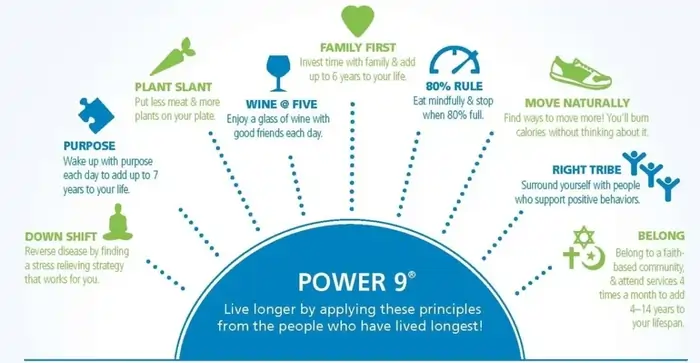
Image Source: OsteoMag
Longevity refers to long duration of individual life or length of life. In scientific terms, it encompasses both lifespan (total years lived) and healthspan (years of healthy, functional life). Understanding longevity meaning goes beyond simply counting years—it involves the biological processes that influence how we age and the quality of life we maintain as we grow older.
Longevity isn’t just about living longer—it’s about the science behind a longer life. The concept goes beyond just surviving more years. It covers quality, vitality, and living with purpose well into our later years.
Lifespan vs. Healthspan: The Key Difference
Your lifespan measures total years from birth to death. Healthspan shows the years you live in good health, without chronic diseases or disabilities. This difference matters a lot to most people. The global average healthspan falls about 9 years short of the average 73.2-year lifespan [1]. Canadian numbers show an even bigger gap—people live to 82.2 years but face 11 years of health challenges [1].
The Mayo Clinic’s Robert and Arlene Kogod Center on Aging aims to improve healthspan by studying aging’s basic biological mechanisms [2]. Their strategy targets aging itself rather than treating each disease separately. This helps delay age-related conditions as a whole [2].
Your lifestyle choices affect both measures by a lot. Regular exercise, good nutrition, strong relationships, and proper sleep play crucial roles in how well you age [2]. These elements can reduce senescent cells that build up and lead to inflammation and tissue breakdown [2].
Human Longevity Through Time
Life expectancy has grown dramatically throughout history. Our early ancestors lived just 20 to 35 years [3]. By 1900, people in industrial nations lived 45-50 years [3]. Today’s healthiest countries see people living to around 80 [3].
The twentieth century brought amazing changes. Nearly half of all increases in human life expectancy happened during this time [3]. Swedish women set records in 1840 with 45 years [4]. Life expectancy has grown steadily since then—adding three months every year [4].
Scientists used to believe human lifespan had natural limits. Experts in the 1920s thought nobody would live past 65. Even in 1990, analysts claimed 85 years was the max [4]. Japanese women proved them wrong in 1996, and other countries followed their lead [4].
Blue Zones: What We Can Learn from Long-Living Communities
Blue Zones are places where people live longer than anywhere else. These regions offer great ways to learn about healthy aging. You’ll find them in Ikaria (Greece), Sardinia (Italy), Okinawa (Japan), Nicoya Peninsula (Costa Rica), and among Seventh-day Adventists in Loma Linda, California [5].
The Danish Twin Study showed something surprising—genes determine only 20% of your lifespan. The other 80% comes down to lifestyle and environment [5]. People in all five Blue Zones share nine lifestyle traits, called the “Power 9” principles [5]:
- Natural movement through daily activities
- Having purpose in life (“ikigai” in Okinawa)
- Regular stress-reduction practices
- Eating until 80% full
- Plant-based diet (95% of centenarians’ diets) [5]
- Moderate alcohol consumption (particularly red wine)
- Belonging to faith-based communities (adding 4-14 years to life) [5]
- Prioritizing family relationships
- Maintaining supportive social circles
Blue Zone centenarians didn’t try to live longerhttps://longevityblueprinthealth.com/mind-over-body-the-science-behind-how-your-thoughts-control-aging/ by changing their habits mid-life. Their environment naturally encouraged habits that led to longer, healthier lives [5].
Resources from authority sites:
10 Ways to Live Longer Based on Scientific Research
Based on decades of longevity research, these evidence-based strategies can significantly extend both lifespan and healthspan:
- Adopt a Mediterranean or Blue Zone-inspired diet
- Engage in regular physical activity (150+ minutes weekly)
- Maintain strong social connections
- Practice stress management techniques
- Ensure adequate sleep quality (7-9 hours)
- Minimize exposure to environmental toxins
- Maintain a healthy weight and metabolism
- Challenge your mind regularly
- Find purpose and meaning
- Consider selective evidence-based supplements
Biological Age vs. Chronological Age: Understanding the Difference
While your chronological age represents the years since birth, your biological age reflects how well your body functions compared to population averages. This difference is crucial—two people of the same chronological age may have vastly different biological ages based on lifestyle, genetics, and environmental factors.
How to Check Your Biological Age
Several scientific methods can help determine your biological age:
- DNA Methylation Testing: Epigenetic clocks like GrimAge and PhenoAge analyze DNA methylation patterns.
- Blood Biomarker Panels: Comprehensive blood tests examining inflammatory markers, hormones, and metabolic indicators.
- Functional Assessments: Measures of grip strength, VO2 max, and reaction time.
- At-Home Approximations: Online questionnaires and basic physical evaluations.
The Science of Aging: Key Biological Mechanisms

Image Source: Nature
The secrets to increasing longevity lie in understanding how aging works biologically. Our body’s functions gradually decline because of specific cellular and molecular changes.
“Aging is not a monolithic process—it’s driven by multiple interconnected hallmarks including genomic instability, telomere attrition, and cellular senescence. Understanding these mechanisms is giving us unprecedented opportunities to target aging itself rather than individual diseases.” — Dr. David Sinclair, Professor of Genetics at Harvard Medical School
Cellular Senescence and Aging
Cellular senescence is more than just cells reaching their replication limit. When cells become senescent, they enter a state of permanent growth arrest but remain metabolically active, secreting a complex mixture of inflammatory cytokines, chemokines, growth factors, and proteases—collectively known as the Senescence-Associated Secretory Phenotype (SASP).
Cellular Senescence and the Hayflick Limit
Leonard Hayflick made a remarkable finding in the early 1960s. Normal human cells can only divide approximately 50 times before they enter cellular senescence [6]. This maximum growth capacity, known as the “Hayflick limit,” challenged the belief that cells could live forever [6].
Senescent cells stop dividing but stay metabolically active. They release inflammatory substances that harm surrounding tissues. These cells build up over time and lead to tissue breakdown and age-related diseases [7]. Their shape changes dramatically and they trigger DNA damage response pathways [6].
The sort of thing i love about cellular senescence is its dual role. It acts as an aging mechanism and naturally suppresses tumors by stopping damaged cells from multiplying uncontrollably [6].
The Double-Edged Sword of Senescence
While senescence serves as a crucial tumor-suppressive mechanism in younger individuals, the accumulation of senescent cells in aging tissues becomes problematic. Research published in Nature Reviews Molecular Cell Biology shows that the SASP components create a pro-inflammatory microenvironment that:
- Damages surrounding healthy cells
- Degrades tissue structure and function
- Promotes chronic inflammation (“inflammaging”)
- Creates a permissive environment for cancer development in later life
Senolytic Therapies: The Cutting Edge
Recent research has focused on developing senolytic compounds—drugs that selectively eliminate senescent cells. In groundbreaking studies at the Mayo Clinic, the clearance of senescent cells in mice:
- Extended median lifespan by up to 27%
- Delayed tumor formation
- Preserved tissue function in multiple organs
- Reduced inflammation and fibrosis
Human clinical trials are currently underway testing compounds like dasatinib and quercetin combinations, fisetin, and navitoclax for age-related conditions.
Telomere Shortening and Chromosomal Stability
Telomeres protect chromosome ends like plastic tips on shoelaces. They stop chromosomes from breaking down or joining with nearby ones. Each time cells divide, telomeres lose about 100-200 base pairs of DNA [8]. This shortening continues throughout our lives.
Cells enter senescence or die when telomeres become too short [8]. So this process limits how long our cells can reproduce and contributes to aging [8].
Telomere shortening happens faster in some tissues. Oxidative stress can speed up this process [6]. A single damaged telomere can stop cell growth [6], which shows how vital they are to cellular aging.
Mitochondrial Dysfunction and Energy Production
Mitochondria power our cells by generating about 95% of our body’s energy (ATP) [2]. These energy factories work less efficiently as we age, making this a significant sign of aging [2].
Age-related mitochondrial changes include:
- Reduced oxidative phosphorylation activity
- More harmful reactive oxygen species
- Poor mitochondrial quality control
- Different mitochondrial dynamics (fusion and fission)
- Fewer new mitochondria being made
Damaged mitochondria create more harmful free radicals, which cause additional damage to mitochondria and cells [2]. On top of that, it builds up mutations in mitochondrial DNA that lead to age-related diseases [9].
Epigenetic Changes and Gene Expression
Our genetic code stays mostly the same throughout life, but gene expression patterns change radically with age. Chemical changes affect gene activity without changing DNA sequence – these are epigenetic modifications that play a vital role in these changes [1].
DNA methylation patterns shift as we age. Some regions lose methylation while others gain it [1]. These changes disrupt normal gene expression by turning some genes on and others off.
Scientists have created “epigenetic clocks” to measure biological age using methylation patterns [1]. These predicted ages strongly correlate (r=0.93-0.97) with actual chronological ages [1].
These fundamental mechanisms could help us develop ways to slow aging and extend healthy life. We have a long way to go, but we can build on this progress to delay age-related diseases by targeting these core processes instead of treating each disease separately.
Resource links from authority sites:
- National Institute on Aging (NIA)
- American Federation for Aging Research
- Buck Institute for Research on Aging
How Diet Influences Longevity?
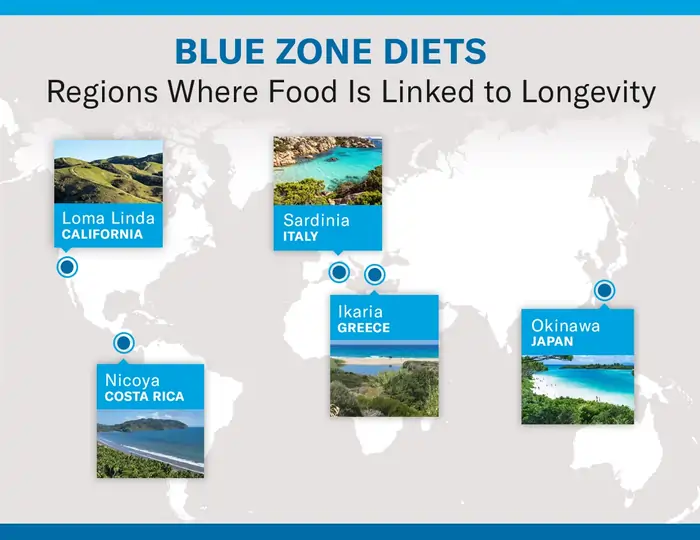
Image Source: Health Matters – NewYork-Presbyterian
What you eat each day could be the biggest factor in how long you’ll live. Research shows that your eating habits and food choices can add or take away years from your life.
“The data is clear that diet quality matters more than quantity. A diet rich in plant foods, healthy fats, and limited processed foods consistently correlates with longer healthspan and reduced disease burden.” — Dr. Valter Longo, Director of the Longevity Institute at USC
Caloric Restriction and Intermittent Fasting
Scientists found that lab mice eating 30-40% fewer calories lived about 30% longer than mice that ate whenever they wanted [10]. This amazing result wasn’t just true for mice – it worked the same way in creatures from tiny worms all the way up to monkeys. This suggests it might work for humans too.
The CALERIE study showed that cutting calories by just 11% slowed down aging by 2-3%. This equals a 10-15% lower risk of dying [11]. People tried to cut 25% but found it too hard. The good news is that intermittent fasting might give you similar benefits without having to eat less all the time.
Time-restricted eating lets you eat only during certain hours (usually 6-12 hours). One breakthrough study found mice eating the same amount of food but only during set times lived up to 35% longer than mice who could eat around the clock [10].
Your body changes its fuel source during fasting. It starts cleaning out damaged cells through a process called autophagy [3]. The liver uses up its stored sugar first. Then ketone levels rise and pathways that promote longer life turn on [12].
The Mediterranean and Blue Zone Dietary Patterns
When researchers examine the diets of the world’s longest-living populations, consistent patterns emerge from Blue Zone studies. A 25-year study of over 25,000 women found that those who stuck closely to the Mediterranean diet were 23% less likely to die from any cause [4]. Their risk of dying from cancer dropped by 17%, and their chance of dying from heart disease fell by 20% [13].
The traditional Mediterranean diet has:
- Lots of plant foods (vegetables, fruits, nuts, legumes)
- Some fish
- Plenty of olive oil (mostly extra-virgin)
- Very little red and processed meat
- Some alcohol, mainly wine with meals [14]
Blue Zones – places where people live longest – eat similarly. People in these areas get 95-100% of their food from plants [15]. Everyone in Blue Zones eats at least half a cup of beans daily. Research links each 20 grams of beans eaten to an 8% lower chance of dying [16].
Nutrient Density vs. Caloric Density
Nutrient density means nutrients per calorie, while caloric density means calories per volume [17]. Foods with more water naturally pack fewer calories, which makes vegetables and fruits great choices [18].
Foods high in nutrients but low in calories help you stay at a healthy weight while giving you vital micronutrients. Some foods like nuts give you both lots of nutrients and calories, making them great for different health goals [19].
Research shows that focusing on nutrient-rich foods rather than just eating less helps you live longer. Whole, minimally processed foods naturally give you this balance [20].
Specific Foods and Compounds Linked to Longer Life
The UK Biobank study found that switching from unhealthy foods to longevity-promoting diets added 10.8 years for men and 10.4 years for women [21]. Whole grains and nuts gave the biggest boost to lifespan. Cutting back on sugary drinks and processed meats also helped a lot [21].
People in Ikaria, Greece who used about six tablespoons of olive oil daily cut their risk of dying in half [14]. Those who ate leafy greens were 50% more likely to be alive four years later compared to those who ate none [16].
Berries, cruciferous vegetables, beans, and fatty fish keep showing up in longevity research. They work wonders for heart health, inflammation, and cell aging [22].
Resource links from authority sites:
- National Institute on Aging
- Blue Zones Research
- Harvard T.H. Chan School of Public Health
The Role of Exercise in Extending Lifespan
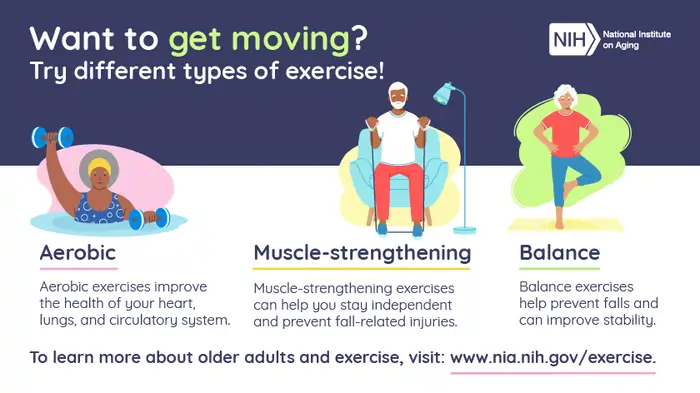
Image Source: National Institute on Aging – National Institutes of Health (NIH)
Physical activity ranks among the most effective ways to live longer and healthier. Research shows that active people have much lower death rates at any age. Different types of exercise all contribute to these benefits.
Cardiovascular Training and Heart Health
Your cardiorespiratory fitness level directly links to your risk of death from any cause. Studies show no increased mortality even in people who are extremely fit [5]. Poor fitness stands out as one of the biggest risk factors that lead to early death [5]. A major study that tracked 116,221 people for 30 years found that people who exercised regularly during their free time lived longer [5].
The numbers tell an interesting story. Adults who did 300-599 minutes of moderate physical activity each week reduced their risk of death by 26-31%. They also lowered their chance of dying from heart disease by 28-38% [23]. These benefits proved especially strong for seniors. Research following 120,000 people revealed that better aerobic fitness had the strongest connection to longevity in people over 70 [24].
Resistance Exercise and Muscle Preservation
Regular resistance training becomes increasingly important as we age to preserve muscle mass and metabolic health. Strength training alone cuts overall death risk by 17%, heart problems by 18%, and cancer risk by 9% [5]. The sweet spot seems to be about 60 minutes weekly. The benefits disappeared when people trained for 130-140 minutes per week [5].
Your muscles become more important as you age. People typically lose 1-2% of muscle mass each year after 50 [6]. Regular strength training helps stop this loss while making your insulin work better, bones stronger, and keeping you independent [6]. The American College of Sports Medicine suggests strength training at least twice weekly on different days [6].
Mobility Work and Joint Longevity
Your joints need movement to stay healthy. They get their nutrition through motion in a process called “elastic-hydrodynamic nutrition” [7]. While all exercise helps, activities like walking, swimming, and tai chi work best for your joints [7].
Simple mobility tests can predict how long you might live. A study of 1,702 people showed that knowing how to stand on one leg for 10 seconds predicted overall survival [5]. The sitting-rising test (SRT) that measures your ability to sit and stand without help also strongly relates to survival rates [5].
Exercise Dosage: Finding the Optimal Amount
Exercise and mortality show interesting patterns. Intense exercise benefits peak at about 150 minutes weekly, with little extra gain beyond that point [5]. Moderate exercise works differently – more time spent equals better results, with no upper limit [5].
Not exercising enough hurts longevity and affects about half of all U.S. adults [5]. On the flip side, too much intense exercise might slightly reduce benefits for the 2.5% of Americans who train extremely hard [5]. Most research points to a reverse J-shaped connection between exercise volume and longevity. Moderate amounts give the best results [25].
Resource links from authority sites:
- American College of Sports Medicine
- National Institute on Aging
- World Health Organization
Mental Wellbeing and Longevity
The connection between mind and body is vital to our lifespan and quality of life. Science continues to show how our psychological state directly shapes our biology and ultimately determines how long we live.
Chronic Stress and Its Effects on Cellular Aging
Chronic stress has a profound impact on cellular aging through multiple pathways. Your cells age faster when you experience ongoing psychological stress. Scientists have discovered that long-term stress triggers the sympathetic nervous system and the hypothalamus-adrenal-pituitary axis. This releases catecholamines and cortisol throughout your body [26]. These stress hormones create oxidative stress that damages DNA directly [26].
Stress primarily affects telomeres—protective caps on our chromosomes. A groundbreaking study revealed that women who felt the most stressed showed telomere shortening equivalent to approximately 10 years of additional aging compared to less stressed women [27]. This cellular aging mechanism explains why ongoing stress makes people more vulnerable to diseases and mental decline [28].
Social Connections and Community Support
Strong relationships are linked to living longer. People with solid support networks have a 26% lower risk of death from loneliness and 29% lower mortality from social isolation [29]. Blue Zones—regions where people live exceptionally long—share one common trait: life revolves around social interaction [8].
The science behind these benefits amazes researchers. Good relationships trigger oxytocin, dopamine, and serotonin production. These hormones strengthen immune function and lower cortisol levels [8]. Beyond emotional benefits, these body changes lead to better blood pressure, less inflammation, and improved heart health [8].
Purpose, Meaning, and Their Biological Effects
A clear sense of purpose substantially extends life. An 8-year study showed that people with the strongest sense of purpose reduced their death risk by 15.2% compared to those with minimal purpose [30]. Women benefited more—showing a 34% reduction in all-cause mortality versus 20% for men [30].
Purpose creates real biological benefits by:
- Building stress resilience
- Supporting healthy behaviors like exercise
- Lowering daily stress reactions
- Increasing preventive healthcare use [30]
Sleep Quality and Cognitive Health
The different sleep stages each play unique roles in physical restoration and cognitive health. Sleep quality shapes cognitive health and longevity powerfully. Poor sleep and irregular sleep duration link to declining cognitive scores over time [2]. Research points to insomnia, fragmented sleep, and rapid eye movement disorders as key risk factors for cognitive problems [2].
Adults over 50 who report worse sleep quality show faster drops in information processing speed [2]. People 65 and older with poor sleep experience quicker verbal memory decline [2]. These effects remain strong even when considering sleep medication use and other risk factors [2].
Resource links from authority sites:
- National Institute on Aging
- American Psychological Association
- Sleep Foundation
Environmental Factors Affecting Longevity

Image Source: American Heart Association Journals
Our environment shapes our health just as much as our personal choices. The world around us can boost or reduce our potential lifespan. These effects often work quietly in our daily lives.
“Our environment shapes our aging process on a cellular level. From air quality to chemical exposures, the cumulative burden of environmental factors can accelerate or slow biological aging.” — Dr. Sara Gottfried, Harvard-trained physician and author of “The Hormone Cure”
Air Quality and Respiratory Health
Air quality ranks among the world’s biggest health risks, especially when you have fine particulate matter (PM2.5). These tiny particles—30 times smaller than a human hair—go deep into our lungs. They trigger epigenetic changes that cause both harmless and dangerous lung diseases [9]. Research shows outdoor air pollutants caused 4.5 million fatalities worldwide in 2019. Asian countries reported most deaths [9].
The University of Chicago’s Air Quality Life Index reveals people lose 2.2 years of life from PM2.5 exposure [31]. The risks show up quickly too. A pregnant woman’s exposure to wildfire smoke each day raises her premature birth risk by almost half a percentage point [31].
Water Contaminants and Filtration Methods
Hidden dangers lurk in our drinking water. Heavy metals, harmful substances, and pathogens pose major threats [32]. Lead remains a serious health concern, mostly from old distribution pipes and building plumbing [32].
Microplastics have become another worry. Scientists found microplastic levels of 440±275 particles/L in tap water from Chinese cities. Most particles measured smaller than 50μm [32]. Chlorine kills germs well but creates byproducts that can damage DNA, cells, and cause cancer [32].
Household Toxins and Minimizing Exposure
Daily exposure to household chemicals creates real risks. Cleaning products, cosmetics, aerosols, plastics, and paint release harmful substances [33]. These particles and gasses build up inside our homes where we spend most of our time.
You can reduce your exposure by:
- Getting high-quality water filters
- Using natural or organic cleaners and personal care items
- Cutting down on plastic, particularly containers with BPA or phthalates
- Switching to glass or stainless-steel options [33]
Light Exposure and Circadian Rhythm Regulation
Light works as the main zeitgeber (time-giver) for our body clock. Its effects depend on when we get exposed. Evening light pushes our circadian clock later, while morning light moves rhythms earlier [1].
Older adults need proper light exposure more. Their eye lenses become pigmented with age and let less blue light reach the retina [1]. Blue light regulates our circadian timing best [1]. Research suggests too little afternoon light leads to broken sleep patterns. This affects cognitive health as we age [34].
Resource links from authority sites:
- Environmental Protection Agency
- World Health Organization
- National Institute of Environmental Health Sciences
Supplements and Longevity: The Evidence
Various strategies to support growth hormone levels have been studied, though results are mixed. The supplement industry sells countless products that claim to extend life. Scientific evidence paints a different picture. Learning what works requires looking beyond marketing claims.
Antioxidants: Promises vs. Scientific Reality
The oxidative damage theory suggests antioxidants should slow aging when they neutralize harmful free radicals [35]. Research results are surprisingly mixed. A study showed that all but one of these antioxidants extended lifespan by 15-20% in nematodes [36].
Antioxidants affect lifespan differently based on their bioavailability and cellular targets [35]. Some antioxidants work only in unfavorable conditions. Many provide benefits through non-antioxidative mechanisms [35].
NAD+ Precursors: NMN and NR Research
NAD+ levels drop naturally as we age, which might lead to aging-related diseases [37]. Two compounds have caught scientists’ attention – nicotinamide mononucleotide (NMN) and nicotinamide riboside (NR). These boost NAD+ levels.
Clinical studies confirm these compounds increase NAD+ in human tissues [37]. Research points to benefits in metabolic health, cardiovascular function, and neurodegeneration [38]. Their effectiveness varies among tissues and individuals.
Scientists have found that gut microbiome plays a vital role in metabolizing these supplements [39]. Most NMN and NR taken orally change into other compounds before absorption instead of directly boosting NAD+ [39].
Adaptogens and Stress Resilience
Adaptogens are plant substances that help your body fight stress by affecting the hypothalamic-pituitary-adrenal axis [40]. A true adaptogen must be safe at normal doses. It should help your body handle stress and restore balance [41].
Studies show that Rhodiola rosea and Ashwagandha protect against stress, fight fatigue, and shield neurons [40]. They achieve this by controlling heat shock proteins and other key stress mediators [40].
Evaluating Supplement Quality and Safety
Dietary supplements face minimal FDA oversight, unlike pharmaceuticals [10]. The FDA doesn’t check safety, effectiveness, or ingredient accuracy before products reach store shelves [11].
Quality products often carry certification from third-party organizations like USP, NSF International, or ConsumerLab [10]. These organizations verify the supplement’s contents and check for harmful contaminants [11].
Note that supplements should enhance—never replace—a healthy diet and lifestyle [10]. Dr. Oppezzo states, “The wellness industry often races ahead of scientific validation, promoting products with claims that outpace the available evidence” [10].
Resource links from authority sites:
- National Institutes of Health Office of Dietary Supplements
- ConsumerLab
- U.S. Pharmacopeia (USP)
Personalized Approaches to Longevity
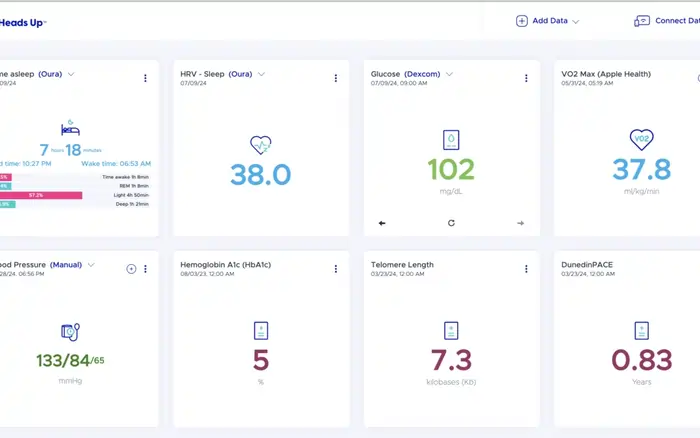
Image Source: Heads Up Health
Personalization has changed how we think about living longer. Basic health rules work for everyone, but your path to a longer, healthier life depends on your genetic makeup, biomarkers, and lifestyle choices.
Beyond One-Size-Fits-All Recommendations
While general longevity principles apply broadly, research increasingly shows that individual responses to interventions vary significantly based on genetic makeup, gut microbiome composition, hormonal status, and existing health conditions.
Comprehensive Biomarker Tracking
Modern longevity medicine utilizes multiple biomarker categories to assess biological age and health trajectory:
Epigenetic Clocks
Key markers to track include:
- Inflammatory markers (hsCRP, IL-6, TNF-alpha)
- Metabolic markers (fasting glucose, insulin, HbA1c)
- Cardiovascular markers (lipid panel, homocysteine, Lp(a))
- Hormones (DHEA, cortisol, testosterone, estrogen)
Functional Assessments
Physical measurements that correlate with longevity include:
- Grip strength (each 5kg increase correlates with 16% lower all-cause mortality)
- VO2 max (each 3.5ml/kg/min increase associates with 14% reduced mortality risk)
- Resting heart rate (5bpm lower rate correlates with 15% reduced cardiovascular mortality)
Genetic Testing and Inherited Risk Factors
Your genes don’t completely control how long you’ll live. Studies show inherited traits account for about 20-30% of lifespan differences, which increases to nearly 40% in people who live past 85 years [42]. Learning about your genetic tendencies gives a vital explanation for targeted health interventions.
Scientists have found specific genes that affect lifespan significantly. Six genes with loss-of-function variants link to shorter lifespans, including TET2, ATM, BRCA2, and BRCA1 [43]. People who carry these variants might live three to fifteen years less than those who don’t [44].
Biomarker Tracking and Interpretation
Aging biomarkers fall into these categories:
- Molecular biomarkers (epigenetic clocks, telomere length)
- Physiological biomarkers (VO2 max, heart rate variability)
- Clinical biomarkers (blood glucose, inflammation markers)
These measurements help detect health risks before they turn into diseases. Research shows that combined biomarkers (biomarker signatures) better predict age-related outcomes than single measurements [45].
Chronological vs. Biological Age Assessment
Your calendar age is different from your biological age (your body’s actual condition). Studies show biological age better predicts health outcomes and mortality risk [46]. The gap between these ages—your age acceleration—strongly links to disease risk.
Biological age tests use specific biomarkers like DNA methylation, blood tests, and physical measurements to determine your aging speed [47].
Creating Your Individualized Longevity Protocol
A personalized longevity plan needs a detailed assessment of your unique factors. The process starts with comprehensive testing to establish your baseline, then moves to targeted interventions that address specific risk factors [3].
Effective protocols need regular retesting. Research suggests checking biological age every three months helps track how well interventions work [12]. Your custom approach might include specific nutrition plans, exercise routines, sleep optimization, and stress management techniques that match your genetic profile and biomarker results.
Based on your biomarker profile, a personalized longevity protocol might prioritize different interventions:
- Those with elevated inflammatory markers might benefit most from anti-inflammatory diets and stress reduction
- Individuals with insulin resistance would prioritize glucose regulation strategies
- Those with telomere attrition might focus on strategies known to preserve telomere length
Resource links from authority sites:
- National Institute on Aging
- Buck Institute for Research on Aging
- American Federation for Aging Research
Why is the G in Longevity Pronounced Twice?
You might have noticed people say “longevity” differently – some pronounce it as “lon-JEV-i-ty” while others go with “long-JEV-i-ty” with a subtle “ng” sound. The story behind this difference shows us the word’s remarkable trip through language history and its health connections.
Etymology and Word Origins
English speakers started using “longevity” in the mid-1500s [48] when they borrowed it from Latin. The word comes from Latin “longaevitas,” which blends “longus” (long) and “aevum” (age) [49][50]. Thomas Newton first used it in his 1569 translation [48].
The Latin roots tell us why language experts call “lon-JEV-i-ty” (with /n/) the standard way to say it. All the same, many speakers say it with /ŋ/ (the “ng” sound) because it reminds them of the English word “long,” especially in some regions [14].
Pronunciation Variations Across English Dialects
British English speakers use two main pronunciations: /lɒnˈdʒɛv.ɪ.ti/ and /lɒŋˈdʒɛv.ɪ.ti/ [14]. North Americans typically say /lɑnˈdʒɛv.ə.ti/, /lɔn-/, or /lɔŋ-/ [14]. These differences come from regional speech patterns rather than right or wrong ways of saying it.
Australians mostly prefer /lɔŋˈdʒev.ə.ti/ [14]. Here’s something interesting – some English dialects actually pronounce the “g” twice: once in the “ng” sound and again in the “j” sound of the second syllable.
Historical Evolution of the Term
Language history shows how “longevity” changed its sound through word associations. Old English words with short ‘a’ often became short ‘o’ before -n-, like in “long” (from Germanic “langa-“) [49].
The standard way to say “longevity” keeps the /n/ sound from Latin, but many speakers naturally use English sound patterns and say it with /ŋ/ [4]. Modern dictionaries now accept both pronunciations [13].
This change in pronunciation shows how borrowed words naturally integrate into native language patterns over hundreds of years. “Longevity” perfectly demonstrates how living languages grow and change.
Resource links from authority sites:
- Oxford English Dictionary
- Cambridge Dictionary
- Etymology Online
Common Longevity Myths Debunked
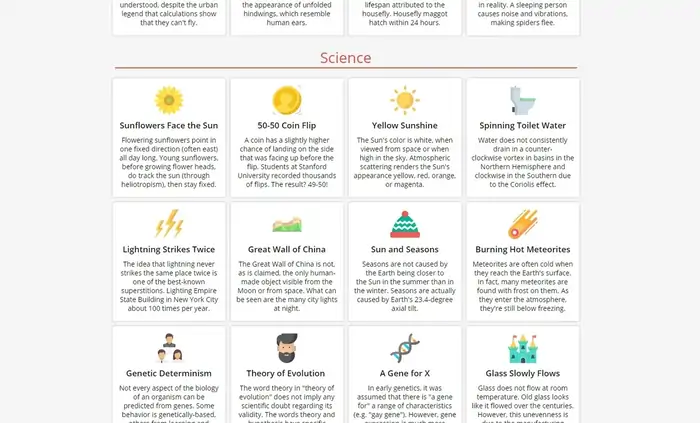
Image Source: IFLScience
People chase longer lives but often fall for myths and false information. We need to separate facts from fiction to make smart decisions about what really works to live longer.
Single-Nutrient and Superfood Misconceptions
The idea of finding a “magic ingredient” that guarantees longevity remains one of the most common myths. No single superfood—whether goji berries, kale, or chia seeds—can dramatically extend your lifespan alone. Dr. Fontana’s words ring true: “The truth is that no magic ingredient or superfood exists” [51]. A varied, balanced diet provides nowhere near the benefits of obsessing over trendy foods.
Anti-Aging Products and Their Limitations
Anti-aging creams and lotions don’t deal very well with aging despite their promises. These products can’t reach deep skin layers to fix basic aging processes [52]. The FDA labels them as cosmetics, not medicines, so they don’t need rigorous testing to prove they work [53]. They might temporarily improve your skin’s appearance, but they can’t stop natural aging or prevent sagging and lost elasticity [54].
Genetic Determinism vs. Lifestyle Factors
Your genes play a smaller role in longevity than most people think. Studies show that genes account for just 25% of lifespan variation [55]. Environmental factors like smoking, physical activity, and economic status shape our health outcomes. Lifestyle choices explain 17% of disease-related death risk, while genes only account for 2% [56]. The saying “genetics loads the gun, but lifestyle pulls the trigger” has real scientific backing.
Extreme Interventions and Their Risks
Extreme methods often backfire—like severe caloric restriction or too much exercise. To name just one example, see how extreme calorie cutting can harm your overall health, even though moderate reduction has benefits [57]. On top of that, intense workouts aren’t always better than moderate exercise for living longer [15]. Green practices work better than extreme measures for longevity.
Resource links from authority sites:
- National Institute on Aging
- Harvard Health
- Mayo Clinic
Conclusion
Your Personal Path to a Longer, Healthier Life
This deep dive into longevity science reveals a simple truth: your daily choices matter more than your genes when it comes to living longer. Research shows that lifestyle factors determine about 75% of our lifespan [16]. You have more control over your longevity than you might think.
The significant difference between lifespan and healthspan can’t be ignored. Adding years to life means little without maintaining quality. A good longevity strategy should help you stay healthy throughout those extra years [58].
Blue Zone populations prove this point perfectly. These communities live exceptionally long lives without fancy interventions. They stay active, eat mostly plants, connect socially, and live with purpose [59]. Their success shows why steady healthy habits work better than extreme measures.
Diet plays a key role in how long we live. Studies consistently show that Mediterranean and plant-based diets lower mortality risk . Time-restricted eating and moderate calorie reduction also show promise by helping cells repair themselves .
Exercise offers the biggest longevity benefits of all. People who exercise 300-599 minutes weekly reduce their risk of death by 26-31% . Both cardio and strength training matter – cardio protects your heart while strength training helps you stay independent as you age .
Your mental health directly affects how long you’ll live. Stress speeds up cellular aging by shortening telomeres. Having purpose and strong social bonds helps protect against early death . Quality sleep also shapes how well your brain ages .
The environment around you shapes your longevity potential quietly. Air pollution alone cuts global life expectancy by 2.2 years [17]. Using air purifiers, water filters, and reducing toxin exposure should be part of any detailed longevity plan.
When it comes to supplements, science often contradicts marketing claims. Few compounds have solid human evidence for extending life [18]. You’ll do better taking a careful, evidence-based approach that prioritizes quality and safety in this complex market.
A personalized strategy offers your best shot at living longer. While general rules work for everyone, your genes, biomarkers, and lifestyle create unique needs [19]. Regular testing and adjustments based on your data help optimize results.
Living longer takes patience and consistency. Small changes add up over decades and can add years of healthy life [20]. Focus on steady improvements in nutrition, exercise, sleep, stress management, and environmental factors. This creates the strongest foundation for a longer, healthier life.
The science of longevity offers a powerful message: through evidence-based lifestyle choices, you can significantly influence how well and how long you live. The key insights from decades of research are clear:
- Start where you are: Even small changes implemented consistently yield meaningful results
- Prioritize consistency over perfection: Sustainable habits outperform temporary extreme measures
- Focus on the big levers: Diet quality, physical activity, sleep, stress management, and social connections
- Track your progress: Regular biomarker testing provides feedback on your biological aging trajectory
Remember: the best time to start investing in your longevity was 20 years ago. The second-best time is today.
Resource links from authority sites:
- National Institute on Aging
- Harvard T.H. Chan School of Public Health
- Blue Zones
- Mayo Clinic Healthy Aging Center
FAQs
What are the most effective science-backed strategies for increasing longevity?
Regular physical activity, a healthy diet rich in plant-based foods, stress management, adequate sleep, and strong social connections are among the most effective strategies. Research shows these lifestyle factors can significantly reduce mortality risk and add years to your life.
How much does genetics influence lifespan compared to lifestyle choices?
Studies indicate that genetics account for only about 25% of lifespan variation. The remaining 75% is largely determined by lifestyle and environmental factors, emphasizing the importance of daily habits in shaping longevity outcomes.
What role does diet play in extending lifespan?
Diet plays a crucial role in longevity. Mediterranean and plant-focused eating patterns have been consistently linked to reduced mortality risk. Additionally, practices like time-restricted eating and moderate caloric restriction show promise for activating cellular repair mechanisms that may promote longevity.
How does exercise contribute to a longer life?
Regular exercise significantly reduces all-cause mortality risk. Studies show that 300-599 minutes of moderate physical activity weekly can lower mortality risk by 26-31%. Both cardiovascular training and strength work contribute uniquely to longevity by protecting heart health and preserving functional independence as we age.
Are there any proven supplements for increasing lifespan?
While some supplements show promise, most lack robust human evidence for life extension. It’s important to approach supplements cautiously and focus on a balanced diet and healthy lifestyle as the primary means of promoting longevity. Always consult with a healthcare professional before starting any supplement regimen.
What Exercise Is Best for Longevity?
Research consistently shows that a combination of moderate aerobic exercise (150 minutes weekly) and resistance training (2-3 sessions weekly) provides the optimal longevity benefits. Studies from the Cooper Institute found that cardiorespiratory fitness is one of the strongest predictors of long-term mortality, while Harvard research demonstrates that resistance training preserves muscle mass and metabolic health with age.
How Can I Measure My Biological Age at Home?
While precise biological age measurement requires laboratory testing, you can approximate your biological age at home by:
Taking online biological age calculators that evaluate lifestyle factors
Measuring grip strength (a strong predictor of longevity)
Assessing recovery heart rate after moderate exercise
Tracking standard biomarkers like blood pressure and resting heart rate
References
[1] – https://pmc.ncbi.nlm.nih.gov/articles/PMC1866218/
[2] – https://pmc.ncbi.nlm.nih.gov/articles/PMC10741338/
[3] – https://www.healthylongevity.clinic/technologies/personalized-longevity-protocols
[4] – https://pronounce.tv/longevity
[5] – https://pmc.ncbi.nlm.nih.gov/articles/PMC10121111/
[6] – https://nortonhealthcare.com/news/why-strength-and-resistance-training-can-help-you-as-you-age/
[7] – https://www.kaneorthopedicinstitute.com/blog/preventive-exercises-to-help-your-joint-longevity
[8] – https://ahs.atlantichealth.org/about-us/stay-connected/news/content-central/2024/strong-social-connections-boost-your-health-and-longevity.html
[9] – https://pmc.ncbi.nlm.nih.gov/articles/PMC10586990/
[10] – https://longevity.stanford.edu/lifestyle/2024/03/11/considerations-when-choosing-supplements/
[11] – https://www.insidetracker.com/a/articles/are-your-supplements-safe
[12] – https://revehealth.com/longevity-protocol/
[13] – https://www.howtopronounce.com/longevity
[14] – https://en.wiktionary.org/wiki/longevity
[15] – https://www.drdavidfein.com/longevity-extension-myths-facts-you-need-to-know/
[16] – https://www.bluezones.com/2020/07/blue-zones-diet-food-secrets-of-the-worlds-longest-lived-people/
[17] – https://www.trainingpeaks.com/blog/why-nutrient-density-is-more-important-than-calories/
[18] – https://www.verywellhealth.com/calorie-density-1763873
[19] – https://lifesum.com/nutrition-explained/nutrient-vs-calorie-density-why-does-it-matter
[20] – https://www.mayoclinichealthsystem.org/hometown-health/speaking-of-health/make-every-calorie-count-with-nutrient-dense-foods
[21] – https://www.nature.com/articles/s43016-023-00868-w
[22] – https://www.webmd.com/healthy-aging/features/longevity-foods
[23] – https://www.ama-assn.org/delivering-care/public-health/massive-study-uncovers-how-much-exercise-needed-live-longer
[24] – https://www.health.harvard.edu/staying-healthy/greater-cardio-fitness-linked-to-longer-life-in-older-adults
[25] – https://pmc.ncbi.nlm.nih.gov/articles/PMC6139866/
[26] – https://pmc.ncbi.nlm.nih.gov/articles/PMC10243290/
[27] – https://www.ucsf.edu/news/2004/11/97660/ucsf-led-study-suggests-link-between-psychological-stress-and-cell-aging
[28] – https://www.frontiersin.org/journals/molecular-neuroscience/articles/10.3389/fnmol.2021.749737/full
[29] – https://hsph.harvard.edu/news/the-importance-of-connections-ways-to-live-a-longer-healthier-life/
[30] – https://www.medicalnewstoday.com/articles/longevity-having-a-purpose-may-help-you-live-longer-healthier
[31] – https://aqli.epic.uchicago.edu/news/the-link-between-air-quality-and-your-longevity/
[32] – https://pmc.ncbi.nlm.nih.gov/articles/PMC9441631/
[33] – https://forbeslongevitycenter.com/how-environmental-toxins-affect-longevity-learn-how-to-minimize-your-risks/
[34] – https://www.frontiersin.org/journals/sleep/articles/10.3389/frsle.2023.1268379/full
[35] – https://www.sciencedirect.com/science/article/pii/S0531556523001420
[36] – https://www.buckinstitute.org/news/buck-institute-study-shows-mixed-results-for-life-extending-properties-of-antioxidants/
[37] – https://www.sciencedirect.com/science/article/pii/S0006291X24001256
[38] – https://pmc.ncbi.nlm.nih.gov/articles/PMC10240123/
[39] – https://www.science.org/doi/10.1126/sciadv.adr1538
[40] – https://pmc.ncbi.nlm.nih.gov/articles/PMC3991026/
[41] – https://www.uclahealth.org/news/article/what-are-adaptogens-and-should-you-be-taking-them
[42] – https://www.thelancet.com/journals/lanhl/article/PIIS2666-7568(23)00140-X/fulltext
[43] – https://pmc.ncbi.nlm.nih.gov/articles/PMC11312667/
[44] – https://www.forbes.com/sites/williamhaseltine/2023/12/21/know-thyself-how-genetic-testing-can-help-extend-your-lifespan/
[45] – https://pmc.ncbi.nlm.nih.gov/articles/PMC8176216/
[46] – https://pmc.ncbi.nlm.nih.gov/articles/PMC10543822/
[47] – https://mcpress.mayoclinic.org/healthy-aging/understanding-the-difference-between-biological-age-and-chronological-age/
[48] – https://www.oed.com/dictionary/longevity_n
[49] – https://www.etymonline.com/word/longevity
[50] – https://www.merriam-webster.com/dictionary/longevity
[51] – https://www.wellandgood.com/food/common-longevity-myth
[52] – https://pssclinic.com/blog/anti-aging-lotion-limits/
[53] – https://www.mayoclinic.org/diseases-conditions/wrinkles/in-depth/wrinkle-creams/art-20047463
[54] – https://www.wfla.com/bloom-tampa-bay/the-pros-and-cons-of-anti-aging-products-do-they-really-work/
[55] – https://pmc.ncbi.nlm.nih.gov/articles/PMC4822264/
[56] – https://time.com/7261172/genes-vs-lifestyle-longevity-study/
[57] – https://medium.com/@davidpriede/longevity-navigating-myths-and-truths-eab6f17ba014
[58] – https://mcpress.mayoclinic.org/healthy-aging/the-blue-zone-diet-and-lifestyle-why-centenarians-are-anything-but-blue/
[59] – https://www.aicr.org/resources/blog/can-the-blue-zone-diet-help-you-live-longer/
